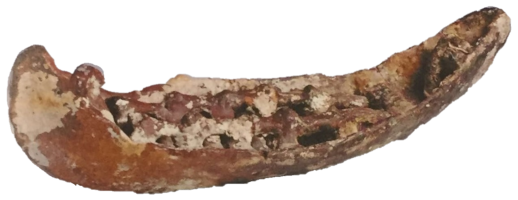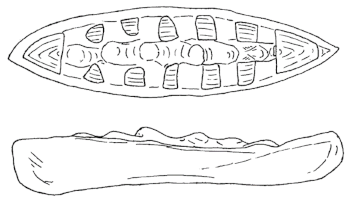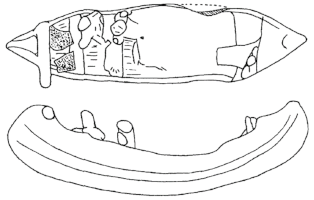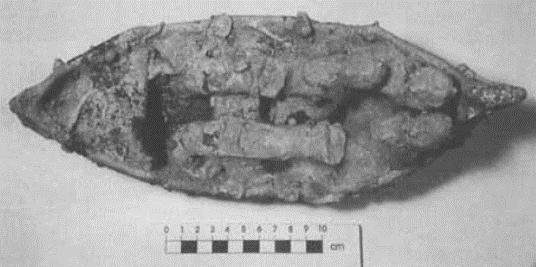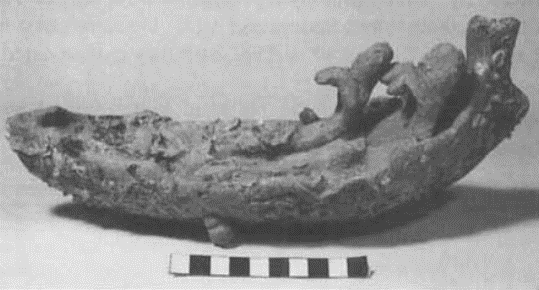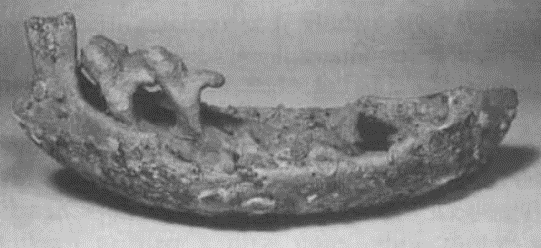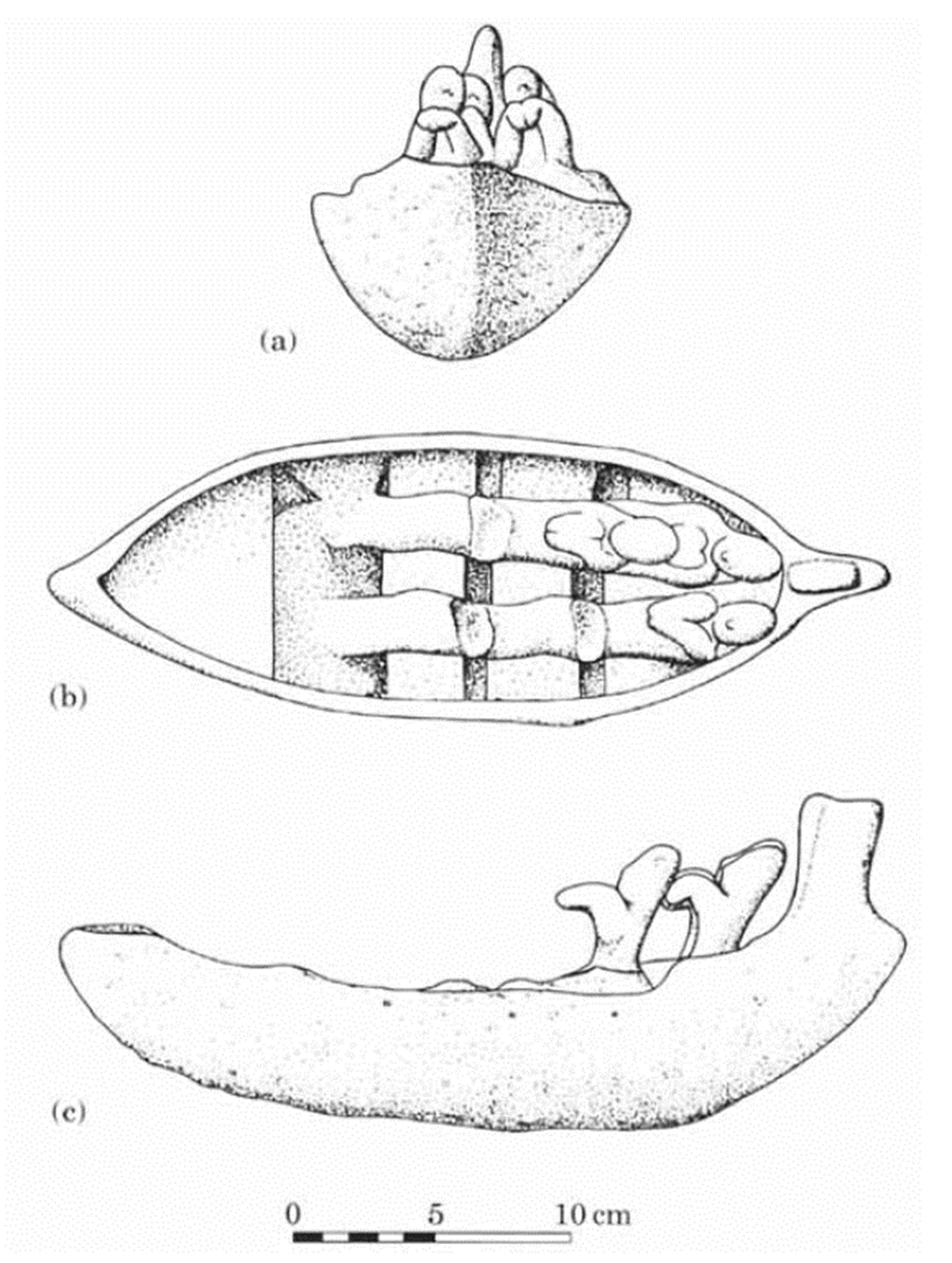Crescentic hull. Vertical stempost with a triangular bow projection at its base, a concave/ hollow external edge that flares towards an undecorated extremity with a slightly concave top. The sternpost is missing but likely extended above the gunwale. Immediately below the gunwale there are small holes - three on the starboard side and four on the port side. These were made with a sharp thin tool prior to firing. The spacing of these holes varies, and they do not correspond to the distances between the rowers. There is a partial stern deck and three large athwartships benches (2.8-2.8 cm wide). On each bench was a pair of oarsmen, their torsos leaning backwards and their arms raised to their chests, depicting the moment of the last instant of pulling the oar in the water before lifting it for recovery. Only three of the oarsmen remain, but the stumps of the others are still visible. Assuming some measure of accuracy between the ratios of the boat model and the rowers, Raban and Kahanov estimate a 6m long boat with a beam slightly over one third of its length (c. 2m). They argue that the lateral cross-section of the boat highlights its relatively deep-draught, which favours an open-sea vessel rather than a small service boat. Such conclusions need to be treated cautiously, since terracotta models in general are rarely reliable guides for proportions.
Ship model with rowers
L43
Archaic (?)
from the sea, the Phoenician coast near Tyre
L: 30.4 cm; W: 11.1 cm; H: 12.1 cm
Terracotta model of dark brown clay covered with marine encrustation. Sternpost broken off above the gunwale
Hecht Museum no. H-3134
Raban and Kahanov 2003: 61-63, figs. 1-2
The boat model was recovered with marine bio-fouling encrustation. This indicates a prolonged immersion in shallow sea water which is typical of the Eastern Mediterranean tidal zone. The fouling and wear also indicate that the models were subject to abrasion by sand. Raban and Hahanov conclude that they were probably recovered from a partially sandy sea bottom, possibly near rocks and in an area that was at least partially protected from the open sea.
Raban, A. and Y. Kahanov. 2003. “Clay Models of Phoenician Vessels in the Hecht Museum at the University of Haifa, Israel,” IJNA 32.1: 61-72.


